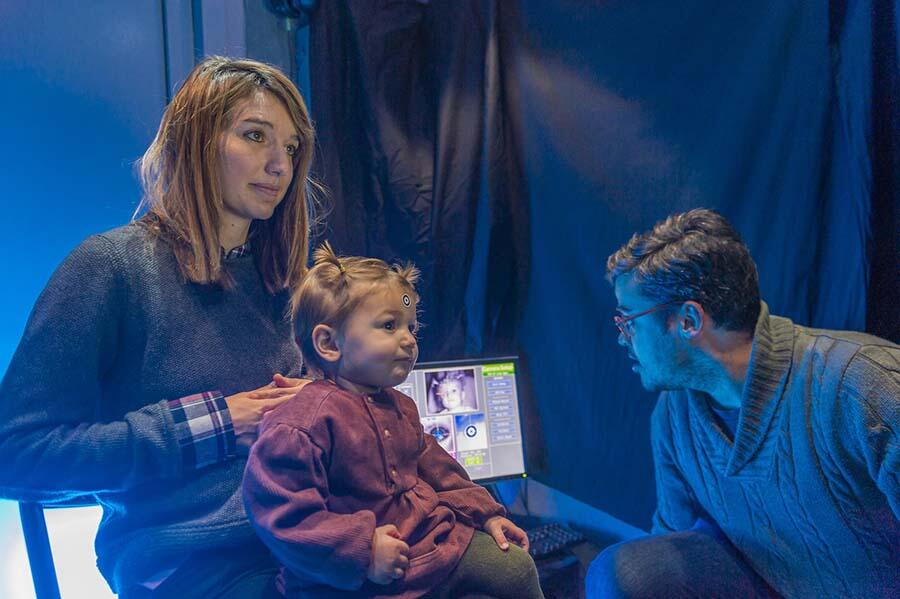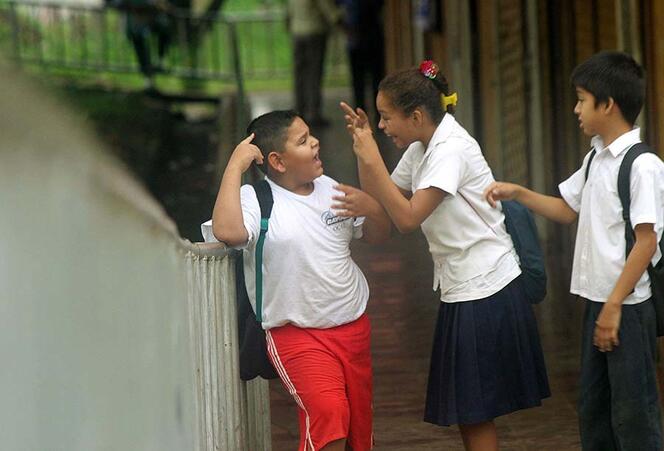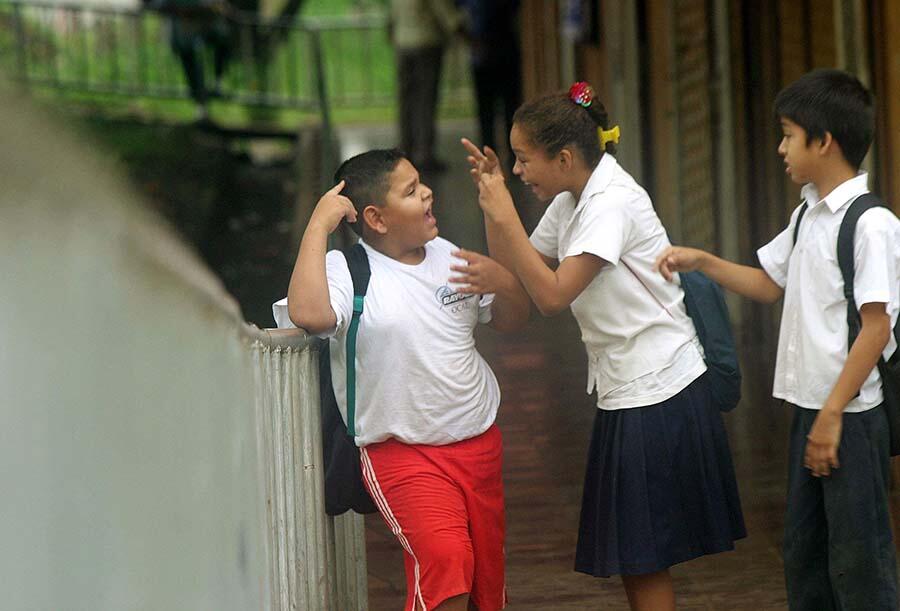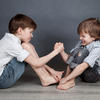You are here
How speech comes to children

In recent decades, the contributions of psycholinguistics, cognitive psychology, and neuroscience have provided a better understanding of how children acquire language. A range of experimental tools and techniques have provided new answers to a question that has occupied philosophers and teachers for centuries.
At the beginning of understanding
The first language skills observed among babies come very early. “If we look at the initial stages of language acquisition, we must especially focus on comprehension,” affirms Anne Christophe, a Senior Researcher at the Cognitive Sciences and Psycholinguistics Laboratory1 (LSCP). There is a substantial delay between the moment children begin to understand what is being said to them, and the moment they begin to speak. “For example, we know the first words (‘daddy,’ ‘mommy,’ ‘no’) are spoken starting around the age of one. However, beginning at 6 months, children already understand very concrete words, such as ‘banana,’ ‘hand,’ etc.,” explains Isabelle Dautriche, a researcher at the Centre for Research in Psychology and Neuroscience2. “Similarly, children begin to speak in sentences very late, at age three, but they understand sentences well before that.”



“If you present two images of simple objects to a six-month-old baby, such as a ball and a shoe, when told to ‘Look at the ball,’ it looks a little bit more at it,” Christophe points out. She uses experimental techniques such as oculometry to determine what the baby understands, along with the clues within its environment that it uses to learn words.
For instance, when a baby is face-to-face with an adult trying to designate an object with a word, it must use the visual context to understand the word’s meaning, and to simultaneously isolate and identify the sound that denotes the word amid a continuous flow of speech. “Guiding the child’s attention, speaking about what the child is focusing on helps acquisition,” Christophe continues. “Around ten months, the baby can follow the adult’s gaze in order to determine where to focus its attention.”
In addition to clues connected to communication, babies learn very quickly to identify more abstract linguistic clues, notably syntactical ones. “At 18 months, babies can use the syntactical context of a word they do not know in order to guess its meaning. For example, if we tell them ‘look at the bamoule ,’ they tend to look for an object in their environment, and if we say ‘Look, she is bamouling,’ they tend to look for an action in their environment.” It is clear that babies already understand the difference between a noun and a verb at this stage.

Jean-Rémy Hochmann, a Senior Researcher at the Marc Jeannerod Institute of Cognitive Science3 and the Director of the Babylab in Lyon, took an interest in the acquisition of another kind of linguistic concept, numbers. While everyone agrees today that babies can represent quantities to themselves, we know this representation remains approximative. “Very young children can tell the difference between 2 and 3, or between 16 and 32, but not necessarily the difference between 8 and 9,” Hochmann notes. Even though children learn words such as “one,” “two,” and “ten” very early on, they understand the exact and normative meaning of these words only much later. “While representations relating to numbers are present among babies, they will progressively analyse them to understand what these words mean exactly,” Hochman specifies. “It is only around 3-4 years of age that they understand that the word ‘five’ precisely means ‘four plus one.’”
Moving beyond the innate/acquired dichotomy
“Children need no formal education to acquire speech, they learn on their own. We do not send them to school to learn how to speak,” Dautriche observes. “Children will never hear enough sentences in order to infer the entire linguistic system to which they are exposed. Yet they do so regardless.” Environment, especially the family environment, plays a crucial role in language acquisition. “Today, the question is not so much determining whether language is innate or acquired, the consensus is that it is surely a little of both,” adds Dautriche.
It is believed that all human babies have a shared basis that enables language acquisition without a major effort or school learning, simply by imitating one’s peers. However, this appears to work only with natural languages. Christophe takes as an example the creolisation of sign language. When Abbé de l’Épée founded an institute for deaf children in the eighteenth century, he initially created from scratch and taught an artificial sign language that sought to translate French. The children never really used it.
“This language did not correspond to the criteria for natural languages,” Christophe goes on. “However, by being together and using fairly concrete basic signs, the deaf youngsters ultimately invented and used a spontaneous language that has all of the complexity of a spoken sign language, with pronouns, tenses for verbs, a morphology, etc.” More recently, linguists observed the spontaneous development of Nicaraguan Sign Language (ISN) among communities of deaf children in western Nicaragua. It therefore appears that we are endowed, right from birth, with neurocognitive structures that predispose us to acquiring and mastering linguistic skills very early on.

Like his colleagues, Hochmann is careful not to use the terms innate and acquired, instead preferring to talk about universal structures: “Some concepts, which our studies show are acquired very early by babies, are present in all languages, and structure them in a universal manner. For example, we find notions of singular/plural, causality, and agent/patient in all languages. Among babies, these notions exist very early on, even before they are able to linguistically express these concepts. It is what we sometimes call the language of the mind, a conceptual basis that is probably present very early on.”
The role of environment in language production
While children ultimately converge towards a linguistic system–generally their mother tongue–all of them do not do so at the same speed. There are enormous differences in vocabulary among children in their early years, subsequently raising the question of environment in language production. “What foretells the spontaneous production of children? Which children speak the most? Do children who speak the most have the most educated parents, with a higher economic level? Do girls speak more than boys? These are some of the questions we have been asking for a long time,” reminds Alejandrina Cristia, a Senior Researcher at the LSCP, and the co-author of an international study focusing on the influence of environmental factors in the precociousness and quality of language production.
To this end, she equipped children with an audio recorder that they wore permanently: over sixteen thousand hours of language production was recorded (16 per child), and automatically annotated with AI-based automatic speech recognition.
“The earlier literature, which most of the time came from the United States, and relied on more experimental measures and vocabulary lists, suggested delays among children who were less educated. But that is not what we found: there is no difference based on socioeconomic level,” ensures Cristia. “However, as we expected, the children hearing the most speech are also those who produce the most. And children that are born premature, as well as those who have a family risk of dyslexia, are children that generally speak less than others.”
Can language production be stimulated among children?
We can subsequently ask whether it is possible to stimulate language production in children. “Numerous studies have been conducted on people living in an urban environment, with access to formal education and basic services,” Cristia indicates. “Among these populations, activities that foster interaction between children and kindly adults, who have the time and the freedom of mind to sit and discuss with their children, read books, etc., appear to have a positive impact on language production.”
However, the data is far from unequivocal. For instance, it is difficult to say whether what children say should be reformulated, with a view to guiding them toward correct pronunciations and syntactical formulations. “Some researchers, in France in particular, believe that this interaction is absolutely crucial, that it is important to listen to children and repeat while elaborating. However, other researchers who work on other populations with other habits believe that such corrections do not work. They show that when children say something incorrect, nearby adults correct them only rarely, and that when they do so, the children often repeat the same thing incorrectly, and ultimately end up learning it on their own,” emphasises Cristia.

“Baby talk,” which is to say the use of simple words and short sentences with a pronounced intonation, has sometimes been recommended, but has never truly proven its worth. “There is no clear data in the literature on baby talk,” Christophe reveals. “It does not exist in all languages, and there are even cultures in which people do not speak to babies at all. And these babies learn to speak their language in spite of this. Speaking to children in a specific way is therefore not indispensable.” In any event, by accentuating intonations and making them more playful, baby talk captures the baby’s attention, which can promote the learning of new words. “The best thing to help babies develop their vocabulary is simply to talk to them, whether it be one on one or in circumstances where the baby is part of the conversation. By contrast, watching television does not help, because it is passive,” concludes Christophe. In short, transmitting one’s language to a baby appears to be as natural as simply learning that language.










